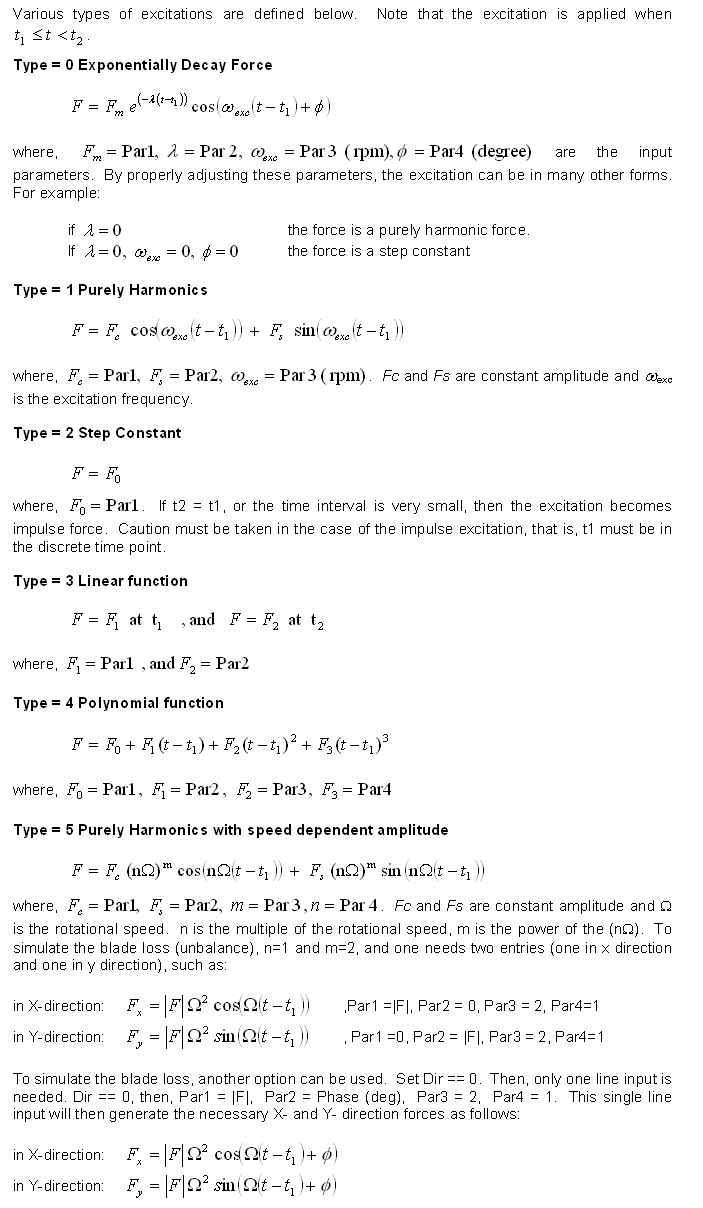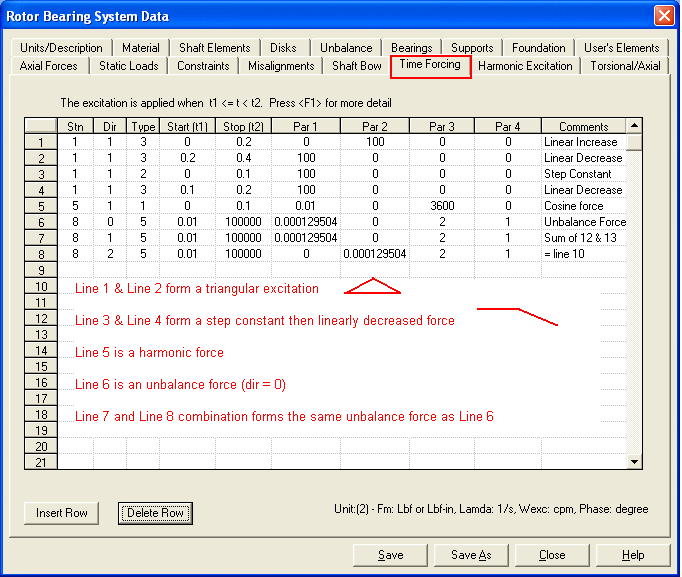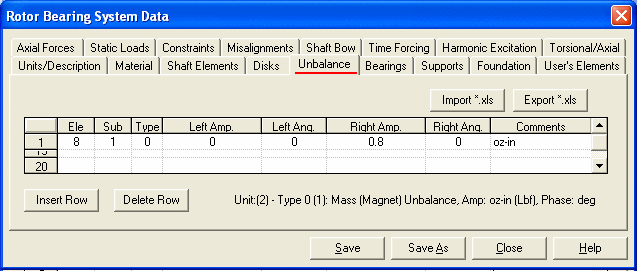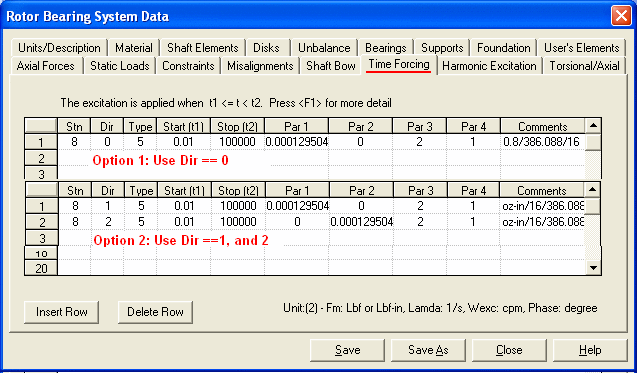
This option allows you to model almost any type of excitation forces/moments, such as synchronous (unbalance, blade loss, etc.), non-synchronous (gear mesh, etc.), any harmonics, step, constant, impulse, etc. The excitation is applied when time (t) is between t1 and t2. Multiple excitations can be applied at the same station. The combination of various types of excitation allows you to model almost any forms of excitation.
1. Stn: Station number where the excitation is applied.
2. Dir: Coordinate at which the excitation is applied. 1 – force in x direction, 2- force in y direction, 3 – moment about x axis, 4 – moment about y axis. 0 – forces in X and Y directions for type 5 only.
3. Type: Excitation type. Various types are defined below.
4. Start (t1): Starting time at which the excitation is applied.
5. Stop (t2): Stop time at which the excitation is ended.
6. Par 1, 2, 3, 4: Parameters used to define the excitation. They are defined below.
7. Comment: Description.


For a standard unbalance, two options can be used to simulate this unbalance and they are listed below:


Copyright © 2014-2017